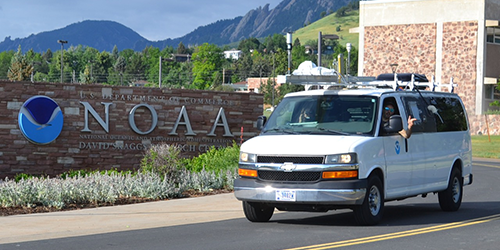Part of Re-Evaluating the Chemistry of Air Pollutants in California (RECAP-CA) and Ozone Formation and its Sensitivity to NOx and VOCs in Las Vegas
Where: Los Angeles, California and Las Vegas, Nevada

When: Summer 2021
What: NOAA CSL conducted mobile laboratory and ground site measurements in Los Angeles and Las Vegas in collaboration with university colleagues and stakeholders to provide surface observations to address current air quality scientific questions in U.S. urban areas. These include emissions inventories, advances in understanding of chemical transformations and their response to changes in emissions, and state-of-the art meteorological measurements. Scientific results from SUNVEx will support the goals of the AEROMMA airborne campaign in 2023.
Who: Investigators from the NOAA Chemical Sciences Laboratory, the University of Colorado (CU) Cooperative Institute for Research in Environmental Sciences (CIRES), the University of California Berkeley, and the California Institute of Technology (CalTech).
Our stakeholders are the California Air Resources Board (CARB) and Clark County Department of Environment and Sustainability (DES). Clark County's main interest is to understand the seasonal cycle of ozone in Las Vegas. Ozone peaks in late June and then decreases throughout the summer. Volatile chemical product (VCP) emissions, boundary layer dynamics or biogenic emissions change at high temperatures are of interest to them. CARB's main interest lies in updating emission ratios of volatile organic compounds (VOCs) not routinely measured by their network.